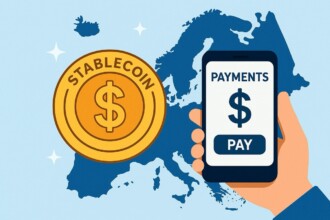GDF sandbox becomes a turning point for the integration of digital assets into mainstream finance, as it proves the real-life utility of tokenized money market funds (TMMFs).

Global Digital Finance (GDF), the global industry association for digital assets, has published the results of its working group and industry sandbox on the legal and operational readiness of tokenized money market funds (TMMFs) as collateral instruments in Europe and the UK. The findings mark a significant milestone for tokenized finance, indicating that TMMFs are both legally sound under current frameworks and technically ready for large-scale market use.
The study evaluated legal certainty, collateral eligibility, and ownership rights of TMMFs across Luxembourg, Ireland, and the United Kingdom, which collectively host over 80% of Europe’s money market funds. It found that Luxembourg provides the strongest legal clarity, supported by statutory provisions that explicitly cover digital assets. Ireland, while lacking direct legislation on tokenized shares, is expected to interpret such assets in line with existing law governing traditional shares and electronic contracts. The UK was also assessed as having a low level of uncertainty, with the forthcoming Property (Digital Assets etc.) Bill anticipated to further strengthen the legal status of tokenized property rights.
More than 70 financial institutions participated in the initiative, including BlackRock, JP Morgan, State Street, Lloyds Banking Group, Northern Trust, Goldman Sachs, EY, S&P, Finastra, and the London Stock Exchange Group (LSEG). Around 30 of these firms took part directly in the GDF Industry Sandbox, which was powered by Ownerausing its FinP2P distributed ledger interoperability technology.
During the sandbox phase, participants carried out six live simulations to test TMMFs in various real-world scenarios, including margin posting, depeg events, default recovery, and triparty funding. The experiments found no significant legal, operational, or regulatory barriers to adoption. Tokenized MMFs were transferred and mobilized within seconds, replacing traditional collateral processes that can take hours or even days. The results demonstrated that on-chain settlement, margin management, and asset substitution could be performed securely within existing market controls.
Industry participants agreed that the findings highlight a major step forward in market modernization. EY’s UK digital assets team said the project confirmed that collateral mobility using TMMFs is achievable today, representing a tangible advance in the efficiency of financial infrastructure. Ownera’s leadership noted that the experiments had proven the viability of distributed ledger technology (DLT) in enabling collateral mobility and optimization within regulated markets. The sandbox, they said, underscored the ability of interoperability layers such as FinP2P to connect existing institutions and systems without requiring structural overhauls.
The results also underscore the potential benefits of TMMFs for market stability and liquidity management. Money market funds remain a cornerstone of institutional liquidity, and tokenization could allow firms to free up capital, increase collateral flexibility, and reduce intraday liquidity stress. These capabilities have gained renewed importance since the UK’s 2022 liability-driven investment (LDI) crisis, which exposed structural weaknesses in collateral mobilization.
According to GDF, the project demonstrates that tokenized fund units can function effectively as collateral within established regulatory frameworks. The organization emphasized that tokenization offers real-world utility, combining the regulatory safeguards of traditional instruments with the efficiency and transparency of blockchain settlement. The success of the sandbox, it added, shows that tokenized assets are moving from theoretical models to practical implementation.
GDF’s board described the project as a turning point for the integration of digital assets into mainstream finance. The association said the initiative had proven that tokenized funds can operate under existing laws while delivering measurable efficiency gains. Building on the European and UK results, GDF plans to launch a U.S. working group in early 2026 to examine similar frameworks for collateral mobility and digital fund infrastructure.
The outcomes suggest that tokenized collateral may soon become a standard feature of global financial markets, offering new pathways for capital efficiency, liquidity management, and cross-border settlement.









